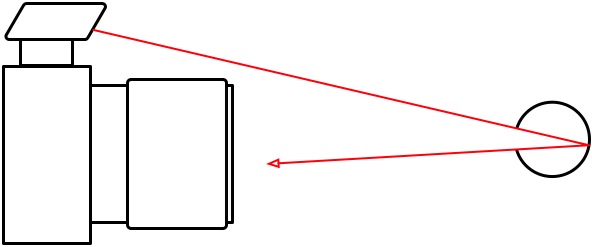
The Red Eye phenomenon is something that occurs when you take a picture of someone. If you have a compact camera and you’ve taken a few rolls of pictures, chances are that you have stumbled across the phenomenon, during which the eyes of your subject end up glowing an eerie red glow.
It's easy to avoid, and easy to fix if you failed to avoid it, but in this article, we'll take a quick look at the science behind red eyes, and the steps you can take to avoid it.
Why does this happen?
If an eye had absorbed all light, then this wouldn’t happen. In fact, if an eye had been theoretically flawless, the red eye effect would not have existed at all. What happens when you see the red eyes on pictures, is that the flash is reflected in someone’s eye. The reflection is red because of all the blood vessels inside the eye:
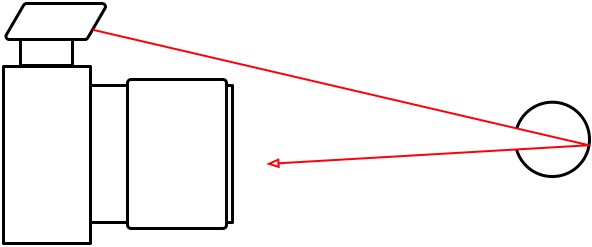
So… How do we avoid red eyes?
Removing the red eye effect can only be done by changing one of three things: The size of somebody's pupil, or the distance between the flash and the lens. Changing either of these things will reduce or remove the red eyes completely.
1) Turn off the flash.
This is the point most people forget about. Obviously, if you can do without a flash, either by increasing the light in the room, by switching a faster ISO value, or using a faster lens

No flash; no red-eyes. Simple!
2) Move the flash further away from your lens
This is a bit harder with compact cameras, but if you have an SLR, you should definitely get an external flash that connects to the hot shoe of your camera. For one thing, these flashes are a lot more sophisticated than the internal ones, but they are also are significantly further away from the lens. Because of the additional distance, the reflection from the back of your eyes never reaches the lens, and the red-eye effect is reduced or removed:
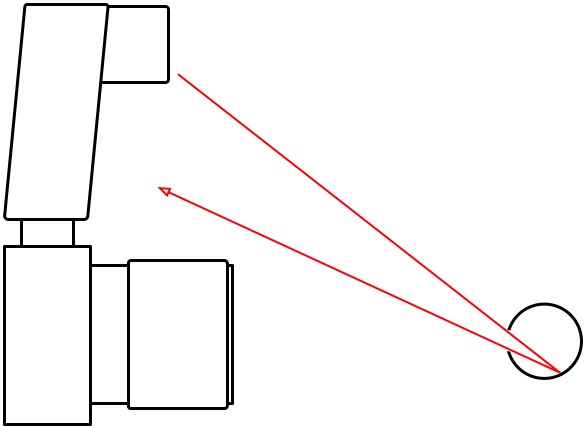
3) Make the iris smaller.
The final thing you can try is to make people's irises smaller: You may have noticed that the red-eye effect is stronger in low light (it's a little bit obvious; that's the only time you'd be using a flash anyway, right?). The reason for this is that if someone's eyes are adjusted to low light, the aperture of their eyes (their irises) will be large:
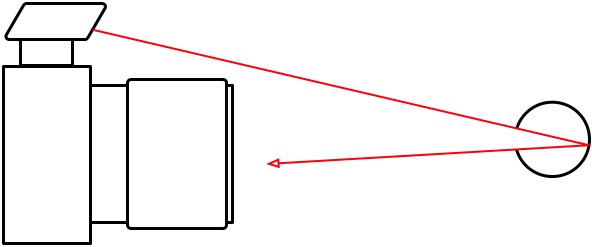
However, if there was a way to simply reduce the size of their irises, you'd get much less of a red-eye effect, simply because mot as much light would be able to hit the lens:
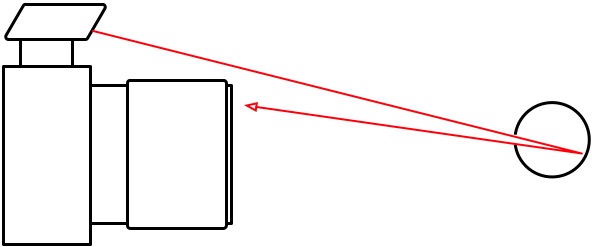
So, how do you make someone's eyes smaller? Here's three ways:
You could try to turn on the anti-red-eye function that probably exists on your camera. This function usually sends off a few short flashes, or it will shine some other sharp light into your “victim’s” eyes. This makes their irises smaller, and the problem diminishes.
Turn on more lights. This has the same effect as above, but it also has some other advantages: One, you get more even light, two, depending how sophisticated your camera is, it might fire a less powerful flash, giving a more natural light. Three: you might get away without using a flash altogether.
Make sure your subjects aren’t drunk. Have you ever noticed that if you take a set of photos at a party, how there seem to be more and more occurrences of the red eyes? Not a coincidence. People who start to become intoxicated have slower reactions – this applies to eyes as well. The eyes just won’t contract as quickly, leaving you with red-eyed pictures.
Finally a quick note on compact cameras
Switching to a faster lens on a compact camera is obviously not possible. What few people realise, however, is that almost all compact cameras have lenses that gather much more light when they are fully zoomed out.
In low light, you should therefore consider zooming out and go closer instead of using the zoom to frame your pictures. On an SLR camera, look for a lens with a larger maximum aperture.
